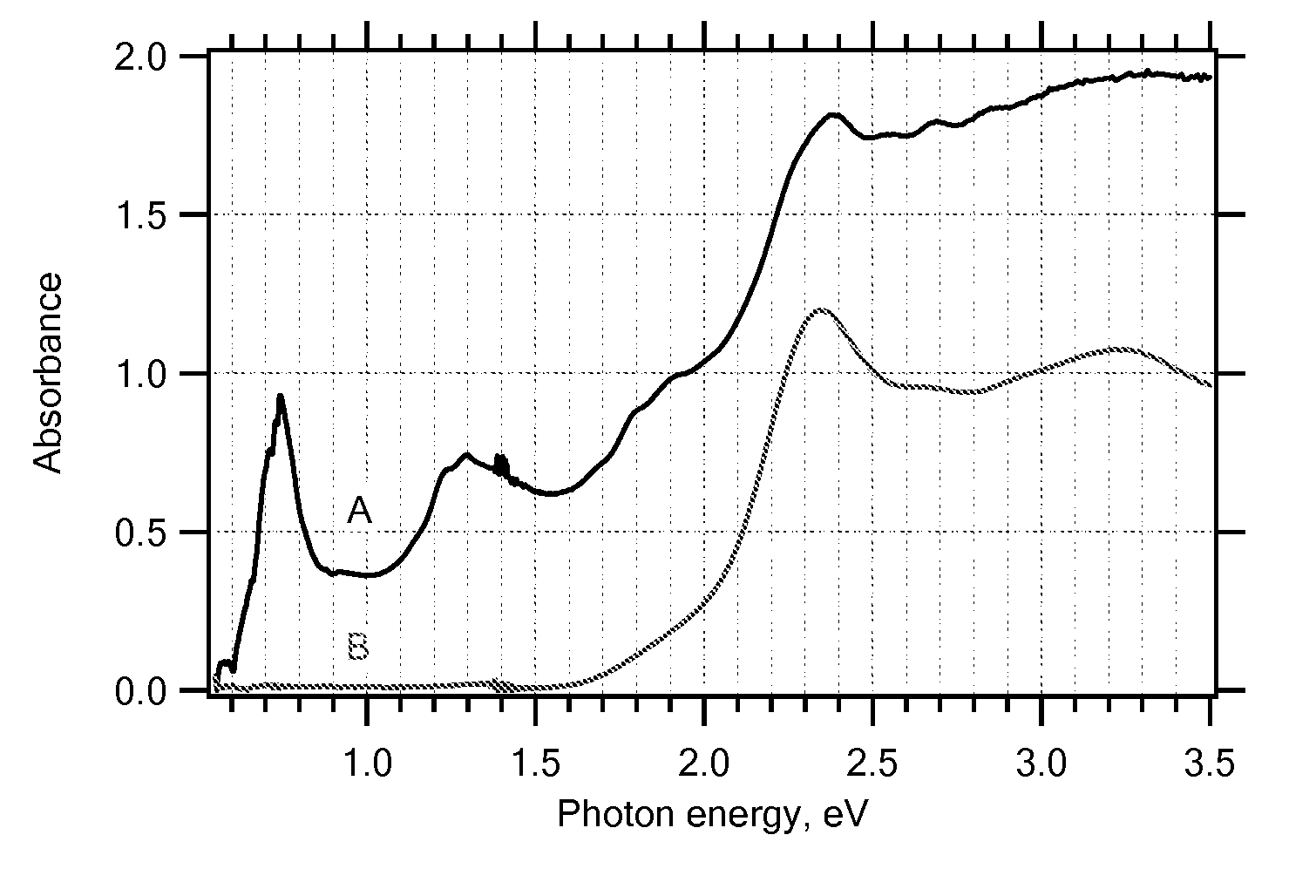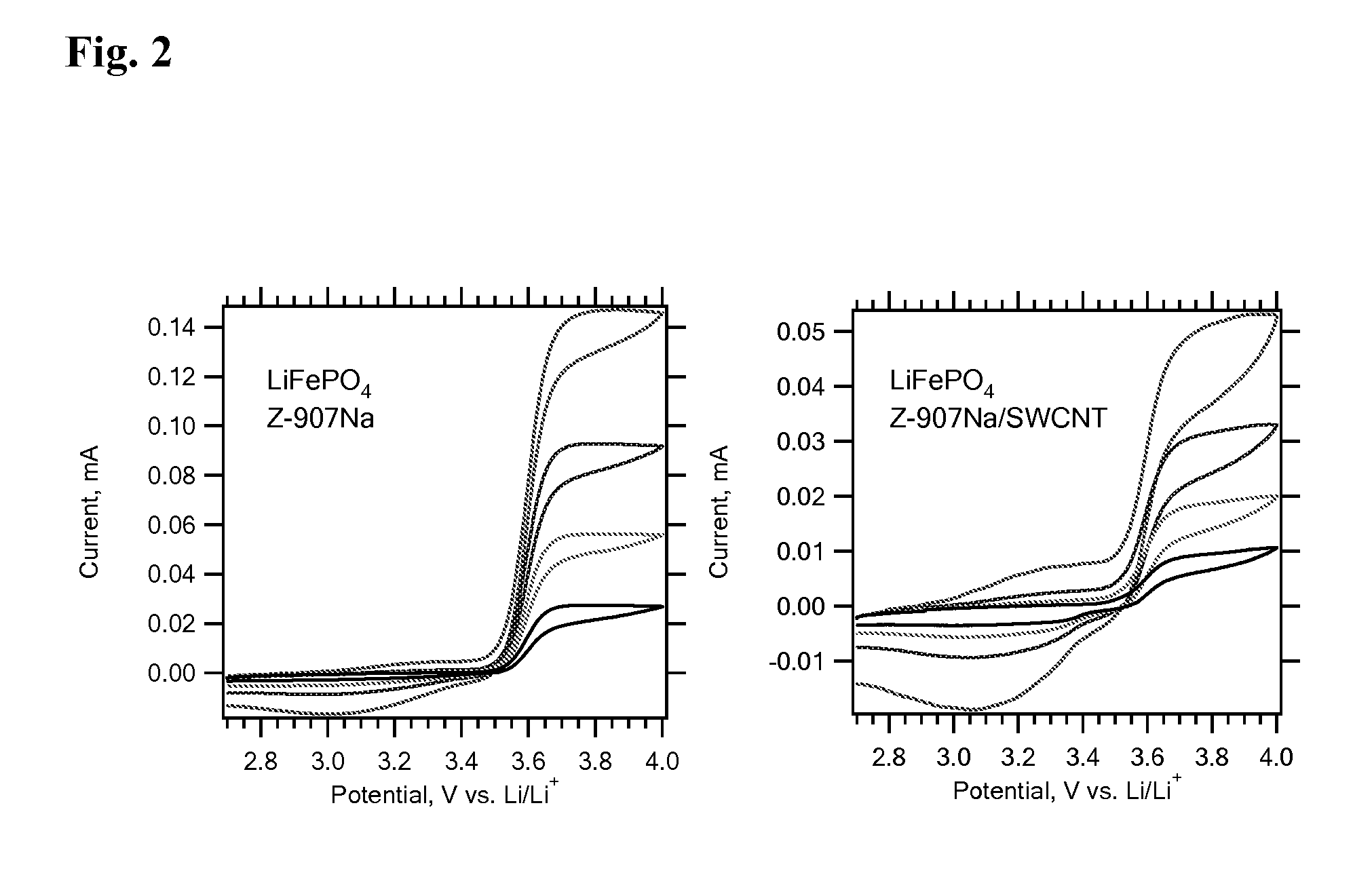Nanotube wiring
a technology of nanotubes and wiring, which is applied in the direction of cell components, electrochemical generators, cell component details, etc., can solve the problems of poor electronic conductivity, reduced energy storage capacity of electrodes, and reduced inert mass
- Summary
- Abstract
- Description
- Claims
- Application Information
AI Technical Summary
Benefits of technology
Problems solved by technology
Method used
Image
Examples
example 1
Methods
[0099]LiFePO4 was synthesized by a variant of solid state reaction[15] employing FeC2O4.2H2O and LiH2PO4 as precursors. Their stoichiometric amounts were mixed and ground in a planetary ball-milling machine for 4 h. Then the powder was calcined in a tube furnace with flowing Ar—H2 (92:8 v / v) at 600° C. for 24 h. After cooling down to room temperature, the sample was ground in agate mortar. The BET surface area of the powder was ca. 5 m2 / g with an average particle size of 400 nm. X-ray diffraction confirmed the phase purity. The Ru-bipyridine complex, NaRu(4-carboxylic acid-4′-carboxylate(4,4′-dionyl-2,2′bipyridine)(NCS)2, coded as Z-907Na was synthesized as described elsewhere[16]. Single walled carbon nanotubes were grown by catalytic laser ablation method. The average diameter of tubes was determined by Raman and Vis-NIR spectroscopy to be ca. 1.3-1.4 nm. Other chemicals were from commercial sources and were used as received.
[0100]SWCNT were dispersed with solutions of surf...
example 2
Synthesis of 12-(2,5-di-tent-butyl-4-methoxyphenoxy) dodecyl phosphonic acid
[0111]
Ratio of Reactants:
[0112]
ReagentF.W (uma)gmlmolI540.760.50.925 · 10−3HCl37%35.55
Method: In a 25 ml three necked round bottomed flask (equipped with a condenser) were placed 0.5 g of I dissolved in a 12N HCl water solution (5 ml). The solution was stirred at reflux temperature for about one night. The reactor was kept in the dark. The reaction was followed by 1H-NMR until the signal of CH2 of the esters has disappeared. Then the excess of chlorhydric acid was distilled off at reduced pressure, and the product collected as brown viscous oil. The product was dissolved two to three times in toluene and the solvent distilled off at reduced pressure. No other purification was needed. Yield: quatitative.
[0113]1H-NMR (CDCl3): 1.18-1.35 ppm (bm, 36H, H chain+C(CH3)3); 1.48 ppm (m, 2H, H chain); 1.81 ppm (m, 4H, H chain); 3.80 ppm (s, 3H, OCH3); 3.94 ppm (t, 2H, OCH2CH2); 6.81 ppm (d, 2H, Har).
Synthetic Route:
[0...
PUM
 Login to View More
Login to View More Abstract
Description
Claims
Application Information
 Login to View More
Login to View More - R&D
- Intellectual Property
- Life Sciences
- Materials
- Tech Scout
- Unparalleled Data Quality
- Higher Quality Content
- 60% Fewer Hallucinations
Browse by: Latest US Patents, China's latest patents, Technical Efficacy Thesaurus, Application Domain, Technology Topic, Popular Technical Reports.
© 2025 PatSnap. All rights reserved.Legal|Privacy policy|Modern Slavery Act Transparency Statement|Sitemap|About US| Contact US: help@patsnap.com



